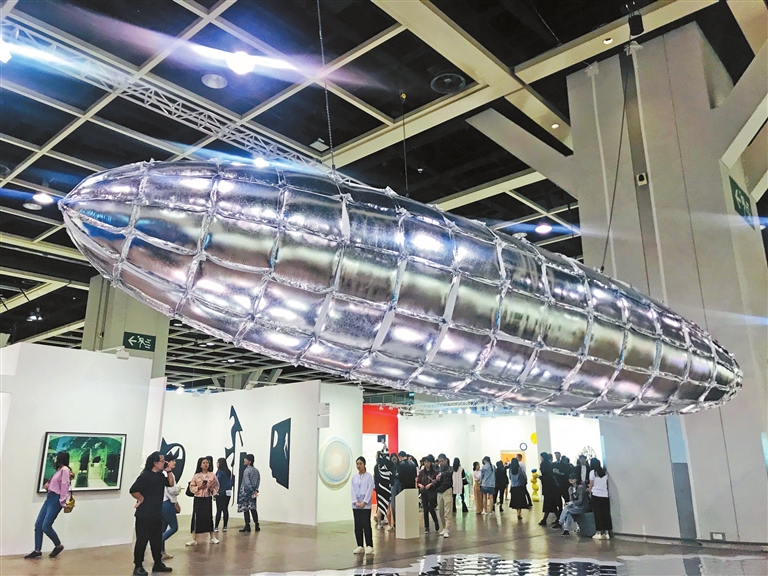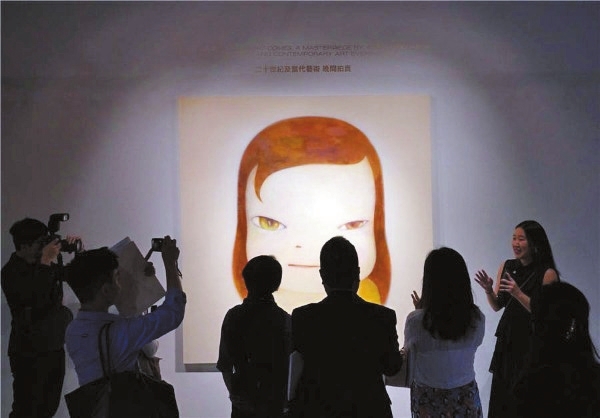

THE influence of the COVID-19 outbreak has hit the art industry. To cope with the impact of the epidemic, major auction houses, art institutions and artists around the world are taking measures to adjust to the new situation. International auctioneers adjust auction schedules Every March in New York, Christie’s and Sotheby’s hold special auctions during Asian Art Week. But this year, March’s auction houses have been quiet. The two major auction houses, Christie’s and Sotheby’s, announced the postponement of a special auction during New York’s Asian Art Week because of immigration restrictions and concerns about the health of staff and attendees. On Feb. 7, Christie’s New York auction house announced that sales during Asia Art Week, originally scheduled for March, would be postponed to June. Christie’s Hong Kong auction, scheduled for March during the Art Basel, has also been postponed until the end of May. The art dealers who have suffered as a result of the border closures and forced quarantines said they understand the priority is to stop the spread of the virus. “During this year’s Asian Art Week, many colleagues and collectors from Asia were unable to attend due to the outbreak of pneumonia caused by the virus. Considering all the circumstances, we decided to postpone the event,” a Christie’s staff member told The Art newspaper. Cross-border effects Following the announcement of the cancelation of Art Basel in Hong Kong exhibition Feb. 7, Art Central also announced the cancelation of this year’s exhibition. The Art newspaper reported that from the impact on art institutions and exhibitions to the effect on artists themselves, the range of this influence has already crossed international borders. According to the 2019 Art Basel and UBS Global Art Market Report, China was the world’s third-largest art market in 2018, accounting for 19 percent of the US$67 billion spent on art that year (the top two, the U.S. and the U.K., accounted for 44 percent and 21 percent respectively). Even institutions far less dependent on Chinese customers, such as the Metropolitan Museum of Art and Broadway Theater in New York, are watching closely. In Paris, the Louvre said attendance had not dropped. But according to the latest figures released by the Louvre, 800,000 of its 10 million visitors in 2018 came from China. Efforts from art institutions According to the survey data from Feb. 5 to Feb. 11, provided by Art Market Monitor of Artron (AMMA), many art institutions have also done a lot of voluntary work to combat the impact of the epidemic. The data showed that 81.5 percent of respondents delayed the resumption of work or extended closures in order to better achieve isolation and avoid gatherings. To control the spread of the epidemic, 55.3 percent of respondents conducted disinfection at work and business sites and strengthened personnel screenings. Of those surveyed 45.5 percent enhanced the transfer of offline business activities and content to online. Among art-related activities held during the epidemic, 21.8 percent of art institutions or practitioners have reported supporting the fight against the outbreak through posters; 21.2 percent of the organizations or personnel have made money or material donations; 20.8 percent of respondents have offered free services or products; and 9.9 percent of the respondents organized or participated in a benefit auction. Respondents said the priority now is to rebuild confidence in the industry, attract collectors back to the market, recoup the mental health of art workers, and reshape the perception and influence of China’s art industry in the world, reported Artron. Secondly, museums and institutions should take this opportunity to find new market and operation modes, for example through the conversion of traditional offline exhibitions into an online format or the building online gallery platforms. Some interviewees also suggested that art’s capacity for bolstering public welfare should be given full play so as to be useful to the public as a source of solace. Through art, people should be able to discover the beauty of life and nature, be guided to love life more, and encouraged to live in harmony with nature. (CGTN) | 
